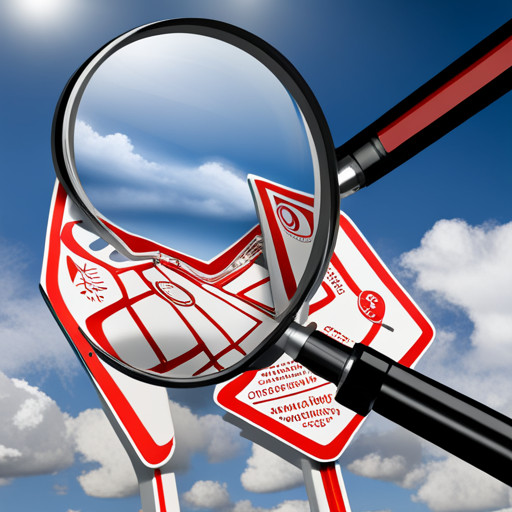The Personal Injury Claim Journey From Identification to Settlement
The journey of a personal injury claim, from identification to settlement, is an intricate process requiring meticulous management. This article explores the critical steps involved in this process.

First, the identification of the responsible party is crucial. This involves determining who is at fault for the injury and gathering evidence to support this claim. Once the responsible party is identified, the next step is to interact with insurance companies. This includes filing a claim, providing necessary documentation, and negotiating with the insurance adjuster.
Another important aspect of the personal injury claim process is evidence collection. This involves gathering all relevant evidence, such as accident reports, witness statements, and medical records. The collected evidence is then thoroughly analyzed to determine the strength of the case.
Medical record analysis is another crucial step. It involves reviewing all medical records related to the injury to assess the extent of the damages and calculate the potential compensation.
Negotiation strategies play a significant role in the personal injury claim process. This includes developing a strong argument, presenting evidence effectively, and negotiating for a fair settlement. Understanding settlement agreements is also essential. This involves reviewing and comprehending the terms and conditions of the settlement offer.
However, settlement negotiations may not always be successful. In such cases, exploring potential alternatives becomes necessary. This can include mediation or arbitration to resolve the dispute outside of court.
In conclusion, the personal injury claim process involves several critical steps. From identifying the responsible party to negotiating a settlement, each step requires careful attention and strategic management. Understanding the process and potential alternatives is crucial for successfully navigating the journey of a personal injury claim.
Key Takeaways
- The personal injury claim process involves identifying the responsible party, sending a notification of claim, gathering evidence, making a demand for compensation, negotiating the settlement amount, and signing the settlement agreement.
- The timeline for a personal injury claim includes identifying the at-fault party, handling communications with the insurance company, and sending a notification letter to the at-fault party and their insurer.
- When contacted by the insurance company, it is important to be cautious with statements during a recorded statement and only sign a release for medical records relating to the present accident and injuries.
- Gathering strong evidence, such as police reports, pictures, video, and eyewitness statements, is critical for winning a fair settlement in a personal injury claim. Medical bills and treatment records that connect the injury to the accident are also important.
Understanding the Personal Injury Claim Process

The personal injury claim process involves several critical steps. These steps include the identification of the responsible party, notification of the claim, collection of supporting evidence, demand for compensation, negotiation of the settlement amount, and signing of the settlement agreement.
Key factors that affect the settlement amount are the severity of the injury, the financial impact, including loss of earnings and medical expenses, and the level of negligence of the responsible party.
However, during this process, there are common mistakes to avoid. These mistakes include accepting the first settlement offer, inadequate documentation, and delaying medical treatment. These missteps can significantly affect the final settlement amount.
Therefore, understanding and effectively navigating through this process can enhance the chances of achieving a favorable outcome.
Key Steps in Identifying the At-Fault Party

Key steps in pinpointing the liable party involve a thorough examination of the incident, including an analysis of the events leading up to the accident, a review of any available evidence, and consultations with witnesses and experts.
Factors for determining fault encompass a multitude of elements such as violation of traffic laws, negligence, recklessness, and impaired driving.
Furthermore, the legal implications of assigning fault are significant and can greatly impact the outcome of a personal injury claim. This fault attribution can determine the amount of compensation that the injured party may receive. Moreover, it also influences insurance premiums for the party found at fault.
Consequently, the process of identifying the responsible party is of paramount importance, requiring meticulous attention to detail.
Interactions With the Insurance Company: What to Expect

Interactions with the insurance company often mark a critical phase in the resolution process, with certain expectations and requirements to be adhered to in order to ensure the best possible outcome. An essential component is the Insurance adjuster communication. The adjuster is tasked with investigating the claim, a process that often includes a request for a recorded statement from the claimant. One should be cautious with such statements, ensuring they do not inadvertently harm the claim.
Another key element is the Reservation of Rights letter, a document sent by the insurer indicating they have not yet accepted liability for the claim.
| Insurance Process | Description |
|---|---|
| Insurance Adjuster Communication | Interaction with the adjuster during the claim investigation phase |
| Reservation of Rights Letter | Document from insurer indicating no acceptance of liability yet |
The Importance of Evidence in Personal Injury Claims

Undeniable importance lies in the collection and presentation of robust evidence when pursuing a resolution in cases involving physical harm. The cornerstone of such evidence often rests on eyewitness statements, as they provide first-hand accounts of the incident, lending credibility and weight to the case.
These testimonies, together with medical records, police reports, and other relevant documentation, create a comprehensive picture of the incident, crucial for the claim's success.
Personal injury lawyers play a pivotal role in this evidence gathering process. Through their expertise, they ensure all necessary material is collected, properly recorded, and presented in a manner that optimizes the claimant's chances of a favorable outcome.
Thus, the importance of eyewitness statements and the role of personal injury lawyers in gathering evidence are paramount in personal injury claims.
Medical Records: Proving Your Injuries Are Accident-Related

Substantiating the connection between the accident and incurred injuries demands meticulous examination of medical records, which offer compelling evidence in the litigation process. Proving causation emerges as a critical element, where medical documentation plays a pivotal role.
| Essential Components of Medical Records | Role in Personal Injury Claims |
| Detailed injury description | Facilitates demonstration of injury severity |
| Comprehensive treatment regimen | Assists in establishing the necessity and cost of treatment |
| Chronological injury progression | Crucial in linking the accident to the injury |
This table illustrates the importance of medical documentation in a personal injury claim. It reinforces the imperative of securing thorough medical records to substantiate claims, ensuring fair compensation for accident-related injuries. A failure to meticulously document these elements may significantly undermine the legitimacy of one's claim.
Navigating the Settlement Offer: Tips and Warnings

Navigating the offer for compensation involves strategic negotiation and careful consideration to ensure an equitable resolution. Recorded statements play a crucial role in this process, as they provide substantive evidence to support the claim. However, the presence of liens on settlement can complicate matters, necessitating an in-depth understanding of their implications.
Emotionally charged elements of this process include:
- The fear of misinterpretation or manipulation in recorded statements, leading to unjust outcomes
- The anxiety surrounding potential liens on settlement, which may drastically reduce the compensation received
- The frustration and stress involved in prolonged negotiations, especially when battling injuries and financial instability.
Understanding these complexities is critical to successfully navigating the personal injury claim journey.
Methods for Responding to the Adjuster’s Offer

Strategies for effectively responding to the adjuster's offer include:
- Polite disagreement with the proposed amount and a detailed explanation of the real and necessary treatment resulting from the incident.
- A meticulous analysis of relevant documents, such as the recorded statement and the medical release form.
- The recorded statement could contain important details that can be used to justify the disagreement with the adjuster's offer.
- Similarly, the medical release form could provide crucial evidence about the severity of the injuries sustained and the consequent treatment.
- Proper interpretation of these documents can substantiate the claim for a higher compensation amount.
- Ultimately, an effective response to the adjuster's offer hinges on a comprehensive understanding of the facts and a strategic presentation of the claim.
Tactics for Negotiating a Fair Settlement

Tactics for negotiating a fair settlement necessitate a thorough understanding of the negotiation process, including the importance of maintaining a strong position and working down from the original demand rather than upwards from the adjuster's counteroffer. Common negotiation strategies involve a well-grounded defense of one's position and a steady decrease from the initial demand, as opposed to a gradual increase from the adjuster's counteroffer.
Handling low settlement offers typically includes:
- Firmly maintaining the belief in the legitimacy of one's claim,
- Persistently advocating for an acceptable settlement figure,
- Not succumbing to intimidation tactics or pressure from adjusters.
These approaches aim to ensure that the claimant is not shortchanged and that the settlement ultimately received is fair and commensurate with the injuries sustained and the losses incurred.
Signing the Settlement Release Agreement: What to Consider

Finalizing the process requires careful attention to the details of the settlement release agreement. This includes factors such as ensuring adequate coverage for medical expenses, lost wages, and pain and suffering. It also involves confirming the inclusion of future medical expenses if applicable.
The agreement should reflect the outcome of settlement negotiation tactics and honour the conditions agreed upon. It is crucial to review the stipulations meticulously, specifically the clauses that detail the claimant's rights and obligations.
The language used in the settlement release agreement should be clear and unambiguous to avoid any future disputes. Additionally, it is essential to ensure that the agreement includes a provision for any potential liens on the settlement.
When Settlement Negotiations Fail: Next Steps

When negotiations fail to reach a satisfactory conclusion, several alternate avenues can be explored to resolve the dispute. These include mediation, arbitration, or court action.
Mediation offers a less adversarial and more flexible approach to dispute resolution. It encourages both parties to engage in constructive dialogue under the guidance of a neutral third party.
If mediation does not yield satisfactory results, arbitration or pursuing a lawsuit in higher court may be considered. Arbitration involves a formal legal proceeding, while pursuing a lawsuit in higher court can be lengthy and costly.
Some factors to consider when deciding whether to pursue legal action include the emotional toll of extended negotiations and legal proceedings, the financial strain of pursuing a lawsuit in higher court, and the potential satisfaction of achieving justice through a court ruling.
Frequently Asked Questions
What Is the Typical Duration of a Personal Injury Claim Process From Identification to Settlement?
The duration of a personal injury claim process, from identification to settlement, varies considerably. Factors such as claim documentation, complexity of the injury, and the tenacity of settlement negotiations all contribute to the timeline.
On average, this process may take several months to a few years. However, each case is unique and the specific circumstances surrounding the claim will ultimately determine the length of time required for resolution.
Can a Personal Injury Claim Still Be Filed if the At-Fault Party Lacks Insurance Coverage?
Yes, a personal injury claim can still be filed if the at-fault party lacks insurance coverage.
Uninsured Motorist Consequences can be severe, often resulting in financial hardship for the injured party.
Legal alternatives available may include pursuing a claim against the at-fault party's personal assets or initiating a lawsuit.
It is crucial to consult with a legal professional to explore all options and navigate the complexity of such situations.
Can an Insurance Company Be Sued Directly in a Personal Injury Case?
In personal injury cases, direct lawsuits against insurance companies can be complex due to insurance defense strategies designed to mitigate liability. Such strategies often include contesting the severity of injuries or arguing contributory negligence. Direct lawsuit implications might involve lengthy legal processes and increased costs.
However, in cases where an insurer acts in bad faith, a direct lawsuit may be a viable option. Nonetheless, such decisions require careful consideration and legal counsel.
What Role Do Expert Witnesses Play in Personal Injury Claims and How Are They Usually Compensated?
Expert witnesses play a significant role in personal injury claims. They provide specialized knowledge to substantiate claims or refute opposing arguments. Their credibility is crucial in influencing the court's understanding of complex issues.
Compensation for expert witnesses varies. It is often based on time spent and expertise, factoring into overall claim expenses. Their input can significantly impact compensation negotiations, potentially influencing settlement outcomes.
What Are Some Common Mistakes That Can Negatively Impact the Settlement Amount in a Personal Injury Claim?
Common mistakes negatively impacting the settlement amount in personal injury claims often revolve around claim documentation and settlement negotiation.
Inadequate documentation, such as insufficient medical records or lack of evidence tying the injury to the accident, can weaken a claim.
Similarly, poor negotiation techniques, including accepting the first offer or not countering low offers effectively, can result in a reduced settlement.
Properly understanding and navigating these aspects is crucial for maximizing settlement amounts.

This post has been generated by AI and was not reviewed by editors. This is Not legal advice. Please consult with an attorney.




